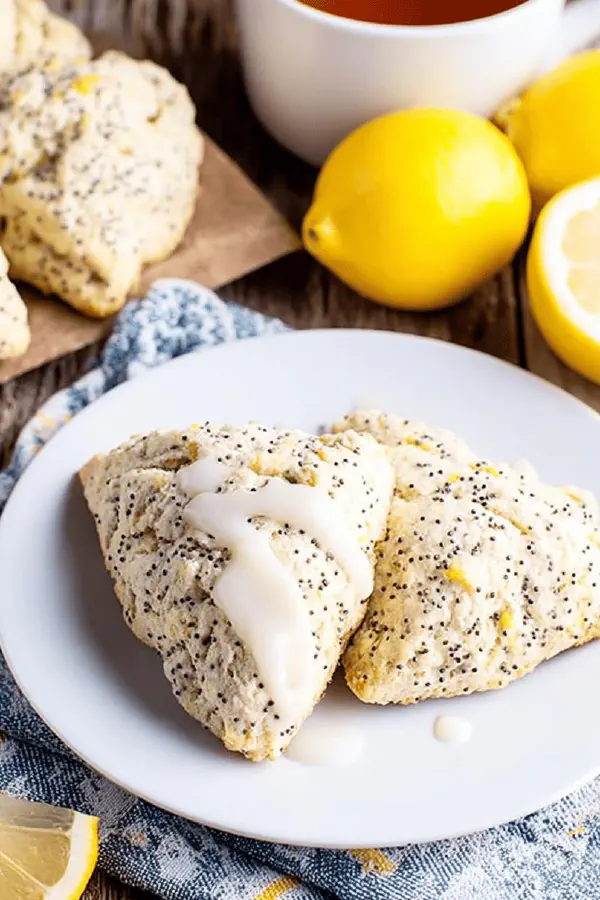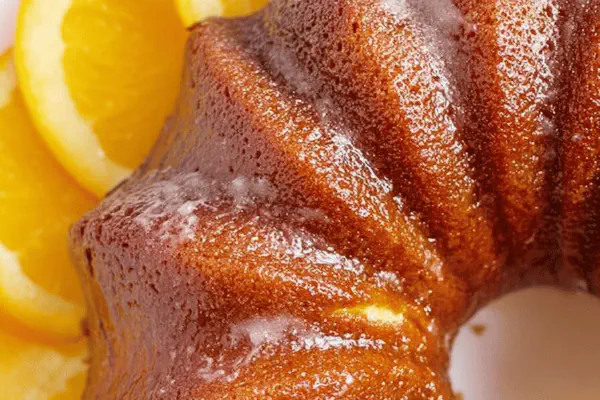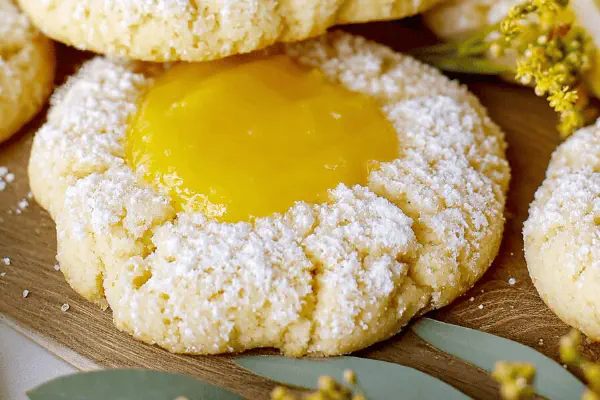Featured Recipe
Lemon Poppy Scones Remix

By Kate
"
Tart lemon zest with fresh juice, gritty poppy seeds, and rich butter create flaky, tender discs. Buttermilk adds tang and keeps texture moist. Swap half flour for whole wheat for heft. Orange juice replaces part of lemon for subtle citrus depth. Scones cut into wedges, baked till golden edges whisper done. Glaze thick but pourable, sugar balanced with juice. Perfectly uneven crumb, snap when broken. Watch dough—not too wet, not dry; handle gently. Oven hot enough for puff but not burn. Parchment key for even color. Citrus scents fill kitchen. Rustic with crackle top and melt-in breaks. Multiple cues—not just timer—make or break outcome.
"
Prep:
20 min
Cook:
20 min
Total:
40 min
Serves:
12 servings
scones
baking
citrus
Introduction
Sharp lemon zest scratches the nose when grating. Fingers cold, butter frozen, tools ready. Flours sifted together late morning light. Small poppy seeds speckle flour like dark sand on white beach. Buttermilk tang stands out, desiring warmth balanced with acid bite. Grating butter hacks cold chunks, helps flaky success. Join flour and butter with rough hands—rustic, uneven crumbs for lift. Juice and zest fresh sensed immediately, citrus scent fills room thick and urgent. Dough, not too wet or dry, powder sugar a thin pall over scones soon to be. Oven hums steady at 380. Watch those edges, golden watch lights flicker across crust. Drizzle glaze that clings, bright and shards on teeth. Simple balance of fat, acid, sweet, and crunch makes all.
Ingredients
About the ingredients
Buttermilk gives moisture and tang; substitute sour cream thinned with milk in equal parts if you’re out. Whole wheat adds texture and nuttiness, but stick to half to avoid toughness. Grated butter distributes fat creating layers; no chunks bigger than peas or dough won’t rise right. If kosher salt missing, fine sea salt works; reduce amount slightly. Added orange juice introduces mellow sweetness and floral notes, balancing lemon sharpness. Poppy seeds can be swapped for chia or sesame seeds for different crunch or nuttiness but avoid large seeds that alter texture. Powdered sugar necessary for smooth glaze; granulated will be grainy and not set well. Fresh lemon juice preferred for brightness but bottled okay in pinch—check for pure juice without additives.
Method
Technique Tips
Oven temperature a touch higher than usual; promotes quick rise but watch for overbrown edges. Parchment prevents sticking and uneven browning; alternatives like silicone mats possible but ensure good airflow. Mix dry ingredients thoroughly to prevent pockets of baking powder—uneven rise disaster. Grating butter instead of cubing reduces mixing time and prevents overwarming, crucial step. Stir dough just until combined; overmix means tight gluten, dense scones. When forming discs, handle dough gently; over kneading develops gluten, ruins flakiness. Thickness critical around 1¼ inch: too thin means tough, too thick means underbaked inside. Cut wedges cleanly with sharp knife to prevent crumb crush. Baking time depends on oven; edges golden with slight firmness signal done better than clock. Cooling on rack mandatory; residual heat finishes cooking and stops soggy bottoms. Glaze consistency key—too thin, runs off and pools, too thick, won’t drizzle evenly; add lemon juice slowly. Drizzle while scones warm, allows glaze to set with crackled sheen. Use tactile and visual cues over timer alone; feel scone top resilience and watch crust color changes for ideal bake.
Chef's Notes
- 💡 Start with cold buttermilk and butter; cold keeps dough flaky. Grating butter creates even fat distribution. Using partially frozen butter? Works well. Integrate quickly, no large lumps should exist. Dough texture matters. Look for rough, uneven pieces. Not too sticky, avoid dry.
- 💡 When mixing dry ingredients, sift well. Even distribution matters; prevents clumps of baking powder. Wrong ratios? Results in uneven rise. Be cautious with salt—too much overpowers flavors. Flour mixtures should be light, airy. If unsure, give it a whisk to hydrate and lift.
- 💡 Cutting the wedges clean is key. Use a sharp knife; dull knives crush dough, affecting rise. Leave gaps between pieces on the sheet; airflow essential for even baking. Deep enough cuts ensure they separate easily post-bake. Watch thickness, aim for about 1¼ inches.
- 💡 Baking time varies by oven. Monitor edges turning golden while tops puff up. Tap tops gently; they should spring slightly. If too firm, it’s overbaked. Cooling on rack? Essential. Soggy bottoms ruin texture. Allow residual heat to finish the cooking process.
- 💡 Glazing needs attention. Mix powdered sugar and lemon juice carefully. Too runny, it pools. Too thick? Won't drizzle properly. Drizzle while scones are warm; allows glaze to set perfectly. Final look? Crackled sheen is a welcome sign of success.
Kitchen Wisdom
Can I substitute for buttermilk?
Yes, use sour cream thinned with milk same ratio. That works. Or milk with vinegar—just wait a few minutes. Both add tang, not as rich.
What if my dough is too wet?
Add flour gradually. But don’t overdo it! Get a balance between wet and crumbly. Avoid dense scones. Use judgment based on look and feel.
Why are my scones tough?
Overmixing! That’s the common culprit. If dough feels tight or elastic, chances are high. Gentle folding and handling is best. Also, check butter handling.
How do I store leftover scones?
Keep in airtight container at room temp for short term. Refrigerate for longer—just reheat in oven. Freezing? Wrap well and store in a zip bag.



